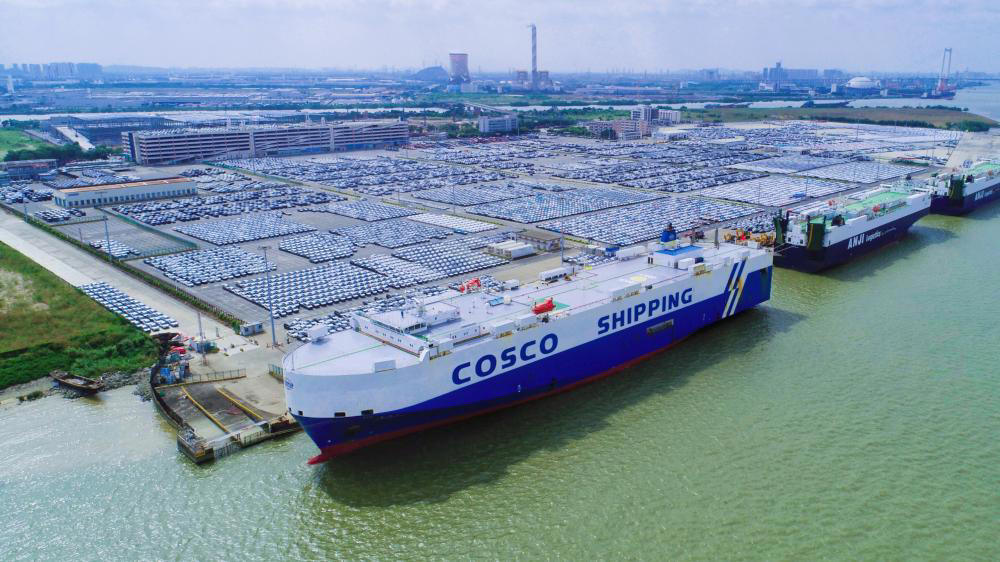
China’s auto exports are on the rise. While Chinese automakers have put the production of EVs (electric vehicles) on hold, most of the production is expected to be exported. China’s auto exports in January-December 2023 are likely to top the list for the first time at about 4.8 million units, surpassing Japan’s 4.3 million units in the same period (both estimates). The global supply-demand balance for car carriers is tightening, and major Japanese shipping companies are having difficulty allocating vessels. (Text by Hirofumi Yamamoto)
Exports of electric vehicles from China to Europe are on the rise, and from the first half of 2023, the transportation of finished cars between China and Europe has been brisk.
An executive of a major Japanese shipping company reflected on car transportation in 2023.
Japan used to be called the “car factory of the world. At its peak, more than 6.5 million finished cars were exported from Japan annually, mainly to North America.
After that, Japanese automakers moved their car production plants to Thailand. They moved their plants to Mexico and other regions closer to consumer markets.
The recent situation is changing at a pace that surpasses the “high frequency, small lot” trend in automobile shipping in the mid-2000s.
This is because China’s exports of EVs to Europe have been spurred by a sharp increase in the transportation of finished vehicles between China and Europe.
According to the China Association of Automobile Manufacturers, China’s exports in January-November 2023 (preliminary figures) were up 58% year-on-year to 4.412 million units; exports from Japan, the second-largest exporter, were up 15% to 3.99 million units in January-November, and are expected to remain at around 4.3 million units for the calendar year.
China’s domestic economy has cooled due to the decline in the property market. There is also a strong sense of surplus in steel products, and some steel industry insiders point out that “the increase in China’s steel exports is the biggest factor in lowering the price of steel exports in Asia.
The same can be said for auto production.
Chinese automakers are increasing production of electric vehicles. It is also pointed out that they are shipping EVs that have become surplus in the domestic market to Europe.
According to Clarkson’s Research, there are approximately 760 car carriers in operation worldwide. There are 170 new vessels on order.
At the end of March 2023, the three major Japanese shipping companies had 111 vessels in service: NYK (42 owned and 69 chartered), MOL 96 (49 owned and 47 chartered), and Kawasaki Kisen Kaisha 85 (31 owned and 54 chartered).
The three major shipping companies together operate 292 vessels, accounting for 38% of the total number of vessels in operation worldwide. A senior shipping executive said, “For large vessels carrying 5,000 or more vehicles, we have a market share of about 50%.
The current situation for car carrier allocation by the shipping giants remains difficult.
In the Suez Canal and the Red Sea, Houthi attacks on ships have caused several vessels to switch to the Cape of Good Hope in South Africa. For the Asia-Europe route, the number of transit days will increase by approximately 10 days.
Japanese shipping companies will give priority to transporting Japanese automakers. On the other hand, they also participate in the transportation of finished cars between China and Europe and cannot cover all shipments.
If the current situation, in which the Red Sea route is virtually blocked, continues, the allocation of car carriers may continue to be difficult in 2024.